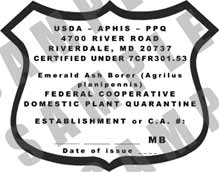Enthusiastic conservation interns needed for two positions (one 3 months, one 6 months) in Western Massachusetts with Don't Move Firewood's summer campaign! Our interns will travel to events throughout the region to educate the public about the issues tackled by Don't Move Firewood- talking about invasive forest pests moving on contaminated firewood, and how people can help look for and report pests. Experience speaking with the public is crucial, a background and/or education in forest issues, conservation biology, or other related field is desirable.
To apply, visit The Nature Conservancy's Job Listing #41992. Applications are due before April 7th 2014.
Please note that a small glitch in this listing sometimes makes it look like the interns will be based in Boston. They will not be in Boston. They will be based in Great Barrington, MA.
Do not apply via any email or form found on Don't Move Firewood's main site. You must go to the TNC Careers listing or your application will not be considered. Thank you!
.jpg)




